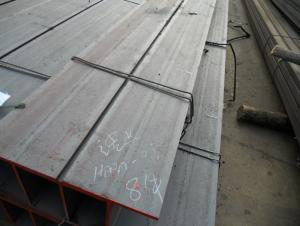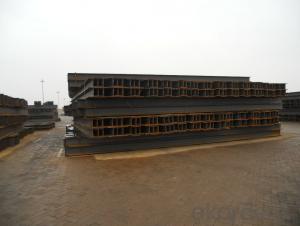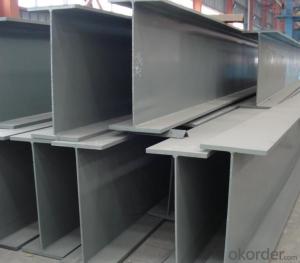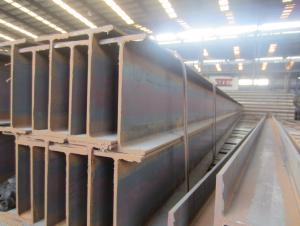GB Q235 Steel H Beam with High Quality 194*150*6.0mm
- Loading Port:
- China main port
- Payment Terms:
- TT or LC
- Min Order Qty:
- 40 m.t
- Supply Capability:
- 15000 m.t/month
OKorder Service Pledge
OKorder Financial Service
You Might Also Like
Specifications of GB Q235 Steel H Beam with High Quality 194*150*6.0mm For Sale:
1. Standard: GB Standard
2. Grade: Q235
3. Length: 12m
Size:
| Size (mm) | Mass (Kg/m) | Size (mm) | Mass (Kg/m) |
| 150*150*7.0 | 31.1 | 200*100*5.5 | 20.9 |
| 198*99*4.5 | 17.8 | 194*150*6.0 | 29.9 |
Usage & Applications of GB Q235 Steel H Beam with High Quality 194*150*6.0mm For Sale:
Commercial building structure ;Pre-engineered buildings; Machinery support structure; Prefabricated structure; Medium scale bridges; Ship-building structure.etc.
Production flow of GB Q235 Steel H Beam with High Quality 194*150*6.0mm For Sale:
Material prepare (billet) —heat up—rough rolling—precision rolling—cooling—packing—storage and transportation
FAQ:
Q1: Why buy Materials & Equipment from OKorder.com?
A1: All products offered byOKorder.com are carefully selected from China's most reliable manufacturing enterprises. Through its ISO certifications, OKorder.com adheres to the highest standards and a commitment to supply chain safety and customer satisfaction.
Q2: How do we guarantee the quality of our products?
A2: We have established an advanced quality management system which conducts strict quality tests at every step, from raw materials to the final product. At the same time, we provide extensive follow-up service assurances as required.
Q3: How soon can we receive the product after purchase?
A3: Within three days of placing an order, we will arrange production. The shipping date is dependent upon the quatity, how many sizes you want and the plan of production, but is typically 1 month to 2 month days from the beginning of production.
Images of GB Q235 Steel H Beam with High Quality 194*150*6.0mm:
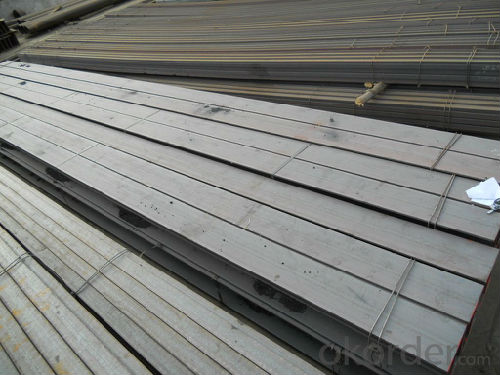
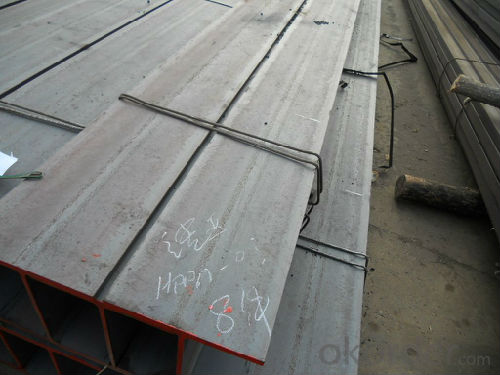
*If you would like to get our price, please inform us the size, standard/material and quantity. Thank you very much for your attention.
- Q:Are steel H-beams resistant to chemical exposure?
- The resistance of steel H-beams to chemical exposure is generally high. Steel is renowned for its durability and strength, which grants it resistance against numerous chemical substances. However, the level of resistance may vary depending on the specific chemicals and duration of exposure. Typically, steel H-beams can endure exposure to common chemicals found in industrial and construction environments, including oils, solvents, acids, and alkalis. Moreover, they exhibit resistance to atmospheric corrosion, making them advantageous for outdoor applications. Nonetheless, it is crucial to acknowledge that extended exposure to highly corrosive chemicals or extreme conditions can still cause detrimental effects on steel. Substances like strong acids or bases, aggressive salts, or highly oxidizing agents can induce corrosion or degradation over time. To ensure optimal resistance to chemical exposure, seeking advice from professionals or experts in the field is advisable. They can offer guidance regarding the specific chemicals involved and suggest suitable protective coatings or treatments for the steel beams.
- Q:Are there any design guidelines or codes for using steel H-beams?
- Yes, there are design guidelines and codes for using steel H-beams. These guidelines and codes are provided by various organizations such as the American Institute of Steel Construction (AISC) in the United States or the Eurocodes in Europe. These guidelines cover various aspects including the design, fabrication, and erection of steel H-beams to ensure their structural integrity and safety in different applications.
- Q:What are the different types of steel used in manufacturing H-beams?
- The different types of steel commonly used in manufacturing H-beams include mild steel, carbon steel, and high-strength low-alloy steel (HSLA).
- Q:What are the different types of steel H-beams available in the market?
- There are several different types of steel H-beams available in the market, each designed for specific applications and structural requirements. Some of the common types include: 1. Wide flange beams (W-beams): These are the most commonly used type of H-beams, featuring a wide flange section and parallel flanges. They provide excellent load-bearing capabilities and are suitable for various construction projects such as bridges, buildings, and supporting heavy loads. 2. I-beams: Also known as American Standard Beams (S-beams), these H-beams have narrower flanges compared to wide flange beams. They are commonly used in structural steel construction, as well as for columns and beams in residential and commercial buildings. 3. H-piles: These H-beams have a wider flange section and are primarily used as foundation piles in deep foundation systems. They are driven into the ground to provide support and stability for structures such as bridges, piers, and buildings. 4. Junior beams: These are smaller-sized H-beams, often used in light-duty applications or where space is limited. They are commonly used in residential construction, as well as in the manufacturing of machinery and equipment. 5. Specialized H-beams: There are also specialized H-beams available in the market, such as stainless steel H-beams, which are corrosion-resistant and suitable for applications in environments with high moisture or chemical exposure. Additionally, there are high-strength H-beams used in industries such as aerospace and automotive, where strength and durability are critical. Overall, the availability of different types of steel H-beams ensures that there is a suitable option for every construction or structural project, considering factors like load requirements, space limitations, and environmental conditions. It is important to consult with structural engineers or industry professionals to determine the most appropriate type of H-beam for a specific application.
- Q:How do steel H-beams contribute to the overall aesthetics of a structure?
- Steel H-beams contribute to the overall aesthetics of a structure by providing a sleek and modern appearance. Their clean lines and minimalistic design create a sense of sophistication and elegance. Additionally, steel H-beams allow for larger open spaces and flexible architectural designs, enhancing the overall aesthetic appeal of the structure.
- Q:What are the safety considerations for steel H-beams during installation?
- During the installation of steel H-beams, several safety considerations should be taken into account. Firstly, it is crucial to ensure that the beams are handled and lifted using appropriate equipment, such as cranes or forklifts, by trained and qualified personnel. Secondly, workers should wear appropriate personal protective equipment, including hard hats, safety glasses, and gloves, to prevent injuries from falling objects or sharp edges. Thirdly, it is important to inspect the beams for any defects or damage before installation to avoid structural failures or accidents. Additionally, proper communication and coordination among the installation team are essential to ensure the safe positioning and alignment of the beams. Lastly, following all relevant safety regulations, guidelines, and industry standards is imperative to minimize risks and ensure a safe working environment.
- Q:Are steel H-beams cost-effective compared to other beam options?
- Steel H-beams are generally considered a cost-effective option compared to other beam choices. There are multiple factors that contribute to this cost-effectiveness. To begin with, steel H-beams have a high strength-to-weight ratio, allowing them to support heavy loads while remaining relatively lightweight. This leads to cost savings in terms of transportation, installation, and foundation requirements. Moreover, steel H-beams are durable and have a long lifespan. They are resistant to corrosion, fire, and pests, resulting in minimal maintenance and replacement costs over time. Furthermore, steel H-beams are easily manufactured and readily available. This enables large-scale production at a low cost, making them more affordable than alternative beam options. Additionally, the availability of standardized sizes and shapes simplifies the design and construction process, further enhancing their cost-effectiveness. It is important to note that the cost-effectiveness of steel H-beams may vary depending on specific project requirements and local market conditions. However, in general, steel H-beams offer a combination of strength, durability, and affordability that make them a cost-effective choice for many construction projects.
- Q:Are steel H-beams suitable for buildings with heavy machinery or equipment?
- Steel H-beams are an excellent choice for buildings that house heavy machinery or equipment due to their exceptional strength and durability. These beams are specifically designed to withstand heavy loads and provide reliable support. The unique shape of the H-beam, with its flanges and web, ensures excellent structural integrity and allows for superior distribution of weight. Moreover, steel is renowned for its high tensile strength and resistance to deformation, making it a dependable option for heavy-duty applications. As a result, steel H-beams offer a stable foundation for buildings requiring the accommodation of heavy machinery or equipment, guaranteeing the overall construction's structural stability and safety.
- Q:What are the design considerations for steel H-beams in cold climates?
- When designing steel H-beams for cold climates, there are several important considerations to keep in mind to ensure their structural integrity and performance. These design considerations include: 1. Material Selection: Choosing the right grade of steel is crucial in cold climates. Steels with higher yield strength and toughness, such as ASTM A572 or A588, are recommended for their ability to withstand low temperatures and resist brittle fracture. 2. Cold Temperature Impact: Cold temperatures can cause steel to become more brittle, increasing the risk of fracture. Designers should consider the impact of low temperatures on the steel's ductility and toughness, and factor in potential temperature variations throughout the year. 3. Structural Stability: Cold climates often experience extreme weather conditions, including heavy snow loads and strong winds. Designers must account for these factors by ensuring adequate load-bearing capacity and stability against lateral forces. It is important to consider not only the weight of the snow but also the potential for snow drifts and their impact on the beams. 4. Thermal Expansion and Contraction: Steel expands and contracts with temperature fluctuations. In cold climates, where temperatures can vary significantly between seasons, it is essential to incorporate proper expansion joints and allow for thermal movement to prevent excessive stress and potential damage to the H-beams. 5. Corrosion Protection: Cold climates often have high levels of moisture, which can accelerate the corrosion process. Designers should consider using protective coatings, such as galvanizing or epoxy, to prevent rust and extend the lifespan of the H-beams in these environments. 6. Insulation: In extremely cold climates, insulation can be used to minimize heat transfer and reduce the risk of thermal bridging, which can lead to condensation and potential corrosion. Insulation should be carefully integrated into the design to maintain the structural integrity of the H-beams. 7. Connection Design: Proper design of connections between H-beams is crucial to ensure their performance in cold climates. Connections should be designed to accommodate potential movement due to thermal expansion and contraction while maintaining structural stability and load-bearing capacity. By taking these design considerations into account, engineers can ensure the optimal performance and longevity of steel H-beams in cold climate environments.
- Q:How do steel H-beams contribute to indoor air quality in buildings?
- Steel H-beams play a minimally direct role in contributing to indoor air quality in buildings. As load-bearing structural elements, H-beams are typically made from steel, which is an inert material that does not release any volatile organic compounds (VOCs) or harmful emissions. Unlike certain building materials such as wood or certain types of plastics, steel H-beams do not emit any pollutants or allergens into the indoor air. However, it is important to note that the overall indoor air quality of a building is influenced by a wide range of factors, including ventilation systems, building materials, furniture, and occupant activities. Steel H-beams indirectly contribute to a healthy indoor environment by providing a sturdy and durable framework for the building, allowing for proper ventilation and effective air circulation. Furthermore, steel H-beams are commonly used in construction projects due to their fire-resistant properties. In the event of a fire, steel does not release toxic gases or smoke that can compromise indoor air quality. This enhances the safety of the building occupants and minimizes the potential health risks associated with poor air quality during fire incidents. In conclusion, while steel H-beams themselves do not directly impact indoor air quality, they contribute to a healthier indoor environment through their non-emissive nature and fire-resistant properties. The overall indoor air quality is influenced by a combination of factors, and the use of steel H-beams helps create a safe and sustainable building structure that supports good air quality.
1. Manufacturer Overview |
|
|---|---|
| Location | |
| Year Established | |
| Annual Output Value | |
| Main Markets | |
| Company Certifications | |
2. Manufacturer Certificates |
|
|---|---|
| a) Certification Name | |
| Range | |
| Reference | |
| Validity Period | |
3. Manufacturer Capability |
|
|---|---|
| a)Trade Capacity | |
| Nearest Port | |
| Export Percentage | |
| No.of Employees in Trade Department | |
| Language Spoken: | |
| b)Factory Information | |
| Factory Size: | |
| No. of Production Lines | |
| Contract Manufacturing | |
| Product Price Range | |
Send your message to us
GB Q235 Steel H Beam with High Quality 194*150*6.0mm
- Loading Port:
- China main port
- Payment Terms:
- TT or LC
- Min Order Qty:
- 40 m.t
- Supply Capability:
- 15000 m.t/month
OKorder Service Pledge
OKorder Financial Service
Similar products
New products
Hot products
Related keywords





















